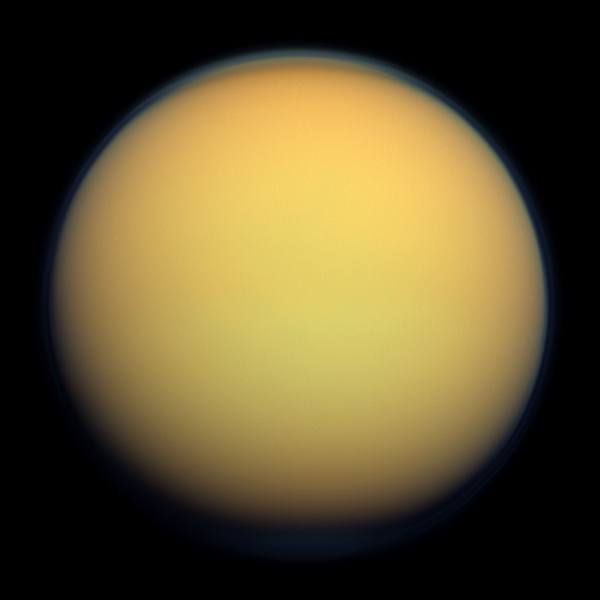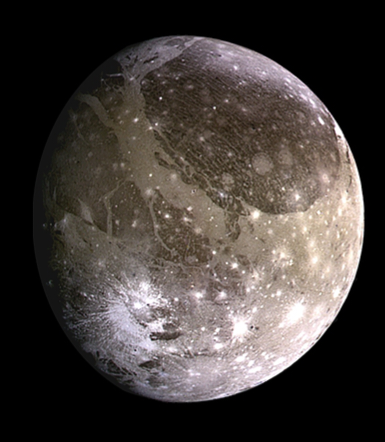*This post may contain affiliate links. This means we may make a commission if you purchase an item using one of our links*
The main differences between Titan and Ganymede include the fact that Ganymede is the largest moon whilst Titan is 2nd, Ganymede has an observable magnetic field whilst Titan does not, Titan has an atmosphere around 1.19 times thicker than Earth’s whilst Ganymede’s atmosphere is non-existent in comparison and Titan has a water cycle similar to Earth whilst Ganymede does not.
There are numerous other differences between Ganymede and Titan so continue reading for a more detailed look at each one of these natural satellites along with their similarities and differences.
What Is The Moon Titan?
Table of Contents

Titan is Saturn’s largest moon and the second biggest moon in the entire solar system, with a diameter of 5,150km. This would make it even larger than the planet Mercury which is only 4,879km, and significantly larger than Pluto also.
As a result, Titan’s gravitational strength stands at around 1.352 m/s²
It is the only natural satellite in our solar system that is composed similarly to Earth, where it has a thick atmosphere made primarily of nitrogen (95%) along with smaller amounts of methane (5%). It has rivers and lakes on its surface along with a water cycle very similar to that of Earth, where essentially water evaporates and eventually lands on the satellites surface.
Therefore, much like Earth, Titan has a terrestrial based body but, there is a difference in their atmospheric pressure. The pressure on Titan’s surface is around 60% greater than that of Earth’s surface but, it isn’t nearly as dense.
Nevertheless, it is still far denser than most other bodies at 1.88 g/cm³. As a result, Titan’s mass is 1.345×10^23 kg.
In regards to its temperature, Titan is on the colder side where it averages around -179 degrees Celsius whilst its core’s temperature is actually very cold in comparison to other entities falling between 226 – 526 degrees Celsius.
As Saturn is the 6th farthest planet from the Sun, it will take Titan roughly the same amount of time to orbit the Sun, which would fall around 29.4 years.
It takes Titan 15 days and 22 hours to orbit Saturn. A day is 15 days and 22 hours also as it is tidally locked to the gas giant.
What Is The Moon Ganymede?

Ganymede is the largest of the Galilean moons – and the largest moon in our entire solar system – first discovered on 7th January 1610. The surface of this icy world is frozen and covered by two main types of landscape: young, light regions and old, crater-filled terrain. And these darker areas seem to contain a number of organic materials.
Using the Hubble Space Telescope, astronomers have found evidence of an oxygen-based atmosphere. Still, it is far too thin to support any living organisms that we know of. Based on this, it’s unlikely that Ganymede hosts life as we know it.
Estimates place Ganymede at around 4.5 billion years old (the same age as its planet, Jupiter), and its average distance from the Sun is approximately 778 million km.
Its diameter is 5,268km, making it larger than the planet Mercury. Despite this, Ganymede only possesses half the mass of Mercury at 1.48 × 10^23kg, so it is still classified as a low-density object.
Ganymede takes seven days to orbit its planet at an average distance of 665,00km, and the temperature varies from minus 112 to minus 193 degrees Celsius. In regards to the moon’s core temperature, that would be around 1,226 – 1,446 degrees Celsius.
Among the fascinating features of this ice moon is its magnetosphere. While many planets possess a magnetosphere, no other moon in our solar system shares this trait.
Measuring the changes in the magnetic fields of Ganymede and Jupiter allowed scientists to predict that salt water lies beneath the surface of this freezing world.
However, this is insufficient to support life when you factor in the other elements of this giant moon. In contrast to Europa, the rocky layer of Ganymede is not directly below the ocean, so life would have a difficult time forming both above and below the ice.
In addition, the thick layer of ice on the moon’s surface would make internal, water-based life challenging for scientists to detect.
How Are Titan And Ganymede Similar?
As both are natural satellites, Ganymede and Titan do share a few similarities, which includes the following:
- Both have a hotter central core.
- Both have a rocky, terrestrial surface.
- Both are spherical in shape.
- Neither have rings surrounding them.
- Both are tidally locked to their planet.
- Both orbit their planet in an elliptical pattern.
- Neither have tectonic plate activity.
- Neither have other moons orbiting them.
Differences Between Titan And Ganymede
In regards to the differences between Titan and Ganymede, they include the below:
- Ganymede is larger with a diameter of 5,268km whereas Titan’s diameter is 5,150km
- Ganymede has a very thin atmosphere whilst Titan’s atmosphere is 1.19 times the thickness of Earth’s.
- Titan has a water cycle similar to Earth whilst Ganymede has no water cycle.
- Ganymede has a magnetosphere whilst Titan does not.
- Titan orbits Saturn whilst Ganymede orbits Jupiter.
- Titan is 1.2 million km away from Saturn whilst Jupiter is 665,000 km from Jupiter on average.
- Ganymede has an average temperature of -112 to -193 degrees Celsius whilst Titan’s average temperature is -179 degrees Celsius.
- In regards to gravitational strength, Ganymede’s is 1.428 m/s² whilst Titan’s gravity is 1.352 m/s².
- Titan has a density of 1.88 g/cm³ whilst Ganymede’s density is 1.94 g/cm³.
- In regards to mass, Ganymede’s is 1.48 × 10^23kg whilst Titan has a mass of 1.345×10^23 kg.
- A Titan day along with its orbit around Saturn is 15 days and 22 hours whilst Ganymede completes a day and an orbit around around Jupiter in 7 days and 3 hours.
- It takes Ganymede 12 years to orbit the Sun whilst Titan completes an orbit in 29.4 years.
- Titan potentially has liquid water beneath its surface while Ganymede does not.
Summary
Although both Titan and Ganymede are moons, and the two biggest at that, with the fact they both orbit gas giants in an elliptical pattern, are low density terrestrial beings and more, they also differ in various ways too.
Whether it be in regards to the length of their day, size, atmospheric composition, magnetosphere, the differences in water cycle and more, the two are still very different, especially when it comes to how they ultimately function.


Titan does not have liquid water on its surface. It is liquid methane, big difference. Methane on Titan acts like water on Earth. It might have liquid water underneath its surface.
You’re right, it may have liquid water underneath it’s surface but not on its surface.